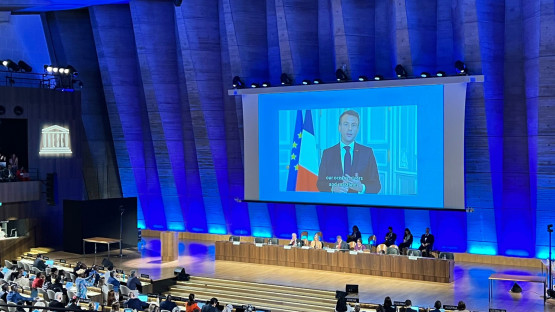The IAEA highlighted its NUclear TEChnology for Controlling Plastic Pollution (NUTEC Plastics) initiative at last week’s major gathering of scientists, policymakers and civil society representatives working towards the end of plastic pollution and a globally concerted effort to forge an international legally binding instrument on plastic pollution, including in the marine environment, by 2024.
Held from 29 May to 2 June in Paris, France, the second session of the Intergovernmental Negotiating Committee (INC-2) on Plastic Pollution was held to define the main features and possible scope of the future instrument, as well as to build upon previously outlined frameworks to curtail the amount of plastic waste generated by human activities and establish work streams to support monitoring programs and analytical research. The committee was formed in 2022 to develop a treaty to address the full lifecycle of plastic – from source to sea.
A side event co-organized with partners featured the IAEA’s NUTEC Plastics initiative, aimed at facilitating cooperation to fight plastic pollution on two fronts: on land, at the point of source, by introducing new technologies to improve plastic recycling; and in the ocean, where the bulk of plastic waste ends up.
The side event brought together speakers from civil society, government and public and private research bodies to exchange insights on potential solutions to mitigate current levels of plastic pollution and key considerations for negotiators of the INC process to prevent further damage to ocean health from microplastic pollution.
One truck of plastic dumped into the ocean – every minute
Plastic pollution in the ocean is a threat to the health of the ocean and the organisms that rely on it. Every minute of every hour of every day, the equivalent of one garbage truck of plastic is dumped into the ocean. This plastic can then be ingested by marine organisms or leach chemicals into seawater, endangering the health of marine plants and corals. Microplastic pollution presents particular challenges, as their variety in size and shapes and lack of concrete visibility requires more resources to assess.
Additionally, while scientific research on the prevalence of microplastics has made great strides since the introduction of plastics into terrestrial and marine environments, this progress has not kept up with the expanding diversity of microplastics and their respective capacities to adsorb and leach harmful chemicals. Potentially more concerning, even less research exists on the additives and co-formulants that leach out of plastic products; additives such as flame retardants, which keep household items from catching on fire, but can cause harm to human health if ingested.







